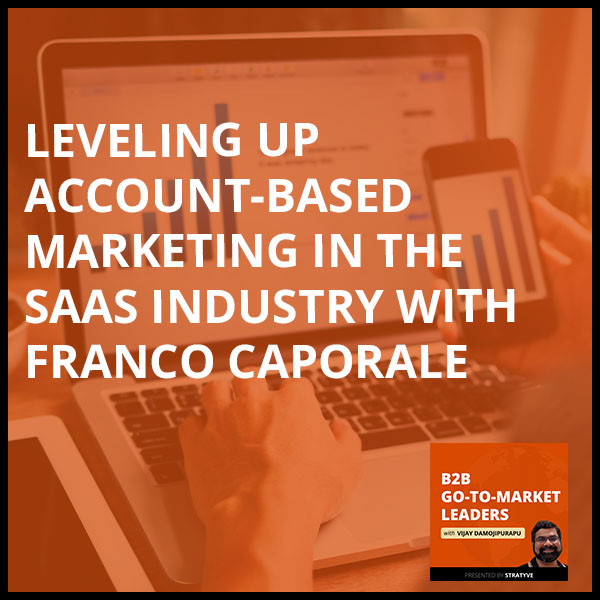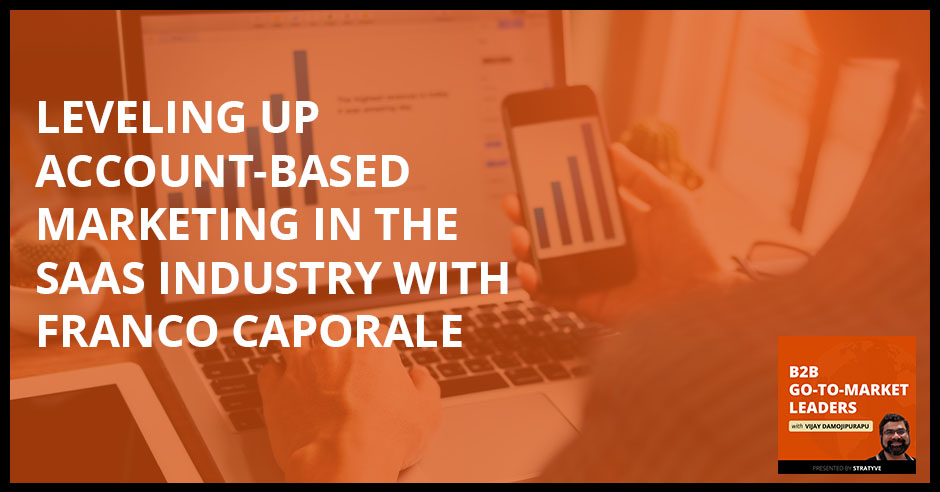

Today’s technology brought the marketing strategy into the age of information overload, changing the game forever. Despite this change, building a strong audience connection is one thing that will evolve but never go away. Therefore, at every marketing level, what you can deliver is what will matter, even more than your brand name. Vijay Damojipurapu sits down with Tolgar Alpagut to talk about handling feedback to improve their processes, delivering content regularly through online means, and the importance of reliable customer service. He also provides a glimpse of how they do marketing technology as the Vice President of Marketing at Tatsoft, talking about building their own communities in today’s challenging setting and their action plans for 2021.
—
Listen to the podcast here
Tolgar Alpagut: Why Forging Audience Connection Is Important In Today’s Market
This is yet another episode with another top-performing go-to-market leader. I have the opportunity and the vehicle to discuss, engage, and learn from Tolgar. He is the VP of Marketing at Tatsoft. Welcome to the show, Tolgar.
Thank you for having me, Vijay.
My signature question and what my audience also look up to and look forward to in my show is this, “How do you define go-to-market?”
That’s a loaded question. Is it not? Go-to-market is in the absence of a strategy that says, “If you build it, they will come.” In terms of what I would define as go-to-market, there are multiple prongs. Traditionally, we think of it as focused on being product or service-centric in terms of how we are going to get the word out as it were about what we do. There are also other facets in terms of customer relationships. There’s employee advocacy, which is a key one that some companies may want to focus on more. Ironically enough, I’m presenting at a webcast, and tongue-in-cheek, I posted two videos of presentation styles, which were Bill Gates and Steve Ballmer when Windows 95 came out and Steve Jobs when the iPhone came out in 2007.
At a fundamental level, everyone is a marketer through their friends and family. Share on XCompletely distinctive presentation styles. I went back and watched that video with Steve Jobs because it’s been a while. The thing about him is, he’s rolling out this brand-new product that no one’s seen and it’s revolutionary. It’s not just a blue ocean or red ocean distinction. They’re not modifying by price or building a better mousetrap, they’re innovating. When you bring something like that to market, you have to anticipate what the reaction of the market is going to be, the nuances of the new challenges, and also the new ecosystem you’re going to create.
Thinking in that scope, I think of go-to-market about understanding the market’s needs. Breaking it down in terms of how you’re going to deliver your product or service, your product roadmap. Breaking down how you’re going to execute upon that and then measuring all along the way. That’s the challenge, strategically speaking, strategies are crafted, tactics are employed, but the measurements are not always there. They’re not in a cycle that’s often enough.
That was the key takeaway for me when I watched Steve Jobs. I thought about that. I said, “I’m going to be on this podcast. Let me see how he does this,” because he had a vision in terms of the anticipation of what the market was going to come back with so that they could adapt quickly. New problems arose from having this phone having all of these capabilities. It opens up a multitude of things that you can’t even anticipate. In any go-to-market strategy, a part of it is speed, resilience, and deep knowledge of the market and what they’re telling you as a response.

That’s a great way you put it there, Tolgar. It’s diverse. It’s not a one-time and done. Go-to-market is a sequence of activities. It’s ongoing. The way I see it and I’ve seen with leading go-to-market leaders track it or verify if something is working or not is through feedback. Your feedbacks are those metrics that you need to have. It’s an ongoing process.
It’s dynamic.
It’s a huge contrast when you compare Bill Gates versus Steve Jobs. Both are successful in their own way. This goes to show that there are diverse go-to-market approaches and there’s no one set formula.
That, quite frankly, is the scope of all of marketing. You will have a baseline of fundamental things that you can do, but it’s the 20% of innovation and trying different things that will help separate you and your go-to-market strategy.
In their own ways, if you look at it, both of their go-to-market approaches are true to their brand, their culture, and how they operate day in and day out.
It acts as an extension of who they are, without a doubt.
That’s a great eye-opener and insight that you revealed. Share with me how you approached your career, your overall story around your professional career journey and what you do.
Marketing is a combination of informing and entertaining the audience. Share on XI don’t know anyone who, as a child, says, “When I grow up, I want to be a marketer.” For me, marketing encompasses all of my eclecticism. I’ve been fortunate enough to try anything and everything that I can. I started out, initially, looking to become a doctor. There was a bit of a pivot. In the early 2000s, I got my degree in Sound Design for film and television. I’ve sold cars. I’ve worked in a medical office. I’ve lived all over the world.
All of those things have been an extension of who I am, but what they’ve given me is the ability to understand people in a way that is an asset in marketing. It’s understanding the behavior and psychology. It’s a mix of art, science, and data. It was the profession that hit the sweet spot and allowed me to still maintain creativity but build the solid foundation of data and analytics and some of the other things that I’m interested in like technology.
Marketing? Yes. No one imagined as a kid that, “I wanted to be a marketer.” There will be exceptions for sure. It applies to me, and I’ve seen that in other cases, you almost get pulled into marketing. You need to feel that pull. For me, I started as an engineer. I never imagined myself succeeding in a non-technical role, which is more around, “How do people think? What motivations do people have when they take a certain set of actions or inaction for that matter?” It boils down to that gray area, which you cannot be taught at school. That’s something that you need to figure out whether you have that ability or maybe you develop that ability to empathize. It’s a psychology aspect as well.
The interesting thing for me is, I often hear from marketers in their organization that they work in, everyone gives them input. Everyone is a marketer. It’s not presented in a way that is necessarily positive. People are saying, “You should do this, do that.” At a fundamental level, everyone is a marketer in the fact that they have friends and family. What does that mean? They’ve built relationships. They’ve offered knowledge. They’ve informed these people in their life. There’s some level of connection that they understand, but the execution, the details, the strategy, and the planning is for those that are pursuing it as a career.
Double-clicking on that. Anyone and everyone in organizations seem to have opinions and input to marketing, which is detrimental as well. How do you handle those situations where someone says, “The messaging on this new product page sucks? It doesn’t resonate. It doesn’t reflect who we are. The featured details are not there. Why did you omit a certain set of features? Why did you omit X, Y, Z versus A, B, C over there?” How do you, as a marketing leader, approach that conversation?

I have an open-door policy. It’s always better to acquire as much information and feedback as possible and then make the decisions. If someone’s going to come to me and say, “This sucks” or, “This needs this,” my first question is, “Why and how can it be better?” If you’re going to come to me with something, then try to also offer a solution from your perspective that you see. Based on that, then we can determine if that’s something we’re willing to test and try, and then the data will tell us if it does truly resonate or not.
Jumping on to the more fun part, not that what we discussed is not fun but more on the lighter side, how would your kids describe what you do on a daily basis?
I have a daughter who I approached and said, “What does dad do, and what is marketing?” Her exact words were, “You help give information to people who want to learn more.” That was right to the point.
You’ve got a smart daughter. It succinctly encapsulates what a marketer ought to be doing.
At the fundamental, I always tell her what I love about what I do is that it’s partially informing and it’s partially entertaining. There can be a mix of that, and that’s what makes this career enjoyable.
Switching gears a bit. Tell us a bit about what Tatsoft does and how you are shaping the overall go-to-market and the marketing strategy there.
Tatsoft is an industrial software company and we create a platform that essentially works anywhere across the board in terms of manufacturing and industrial, from conductivity at a low plant level all the way up to enterprise. Incorporating things that might be housed under Industry 4.0, digital transformation initiatives, or IIoT, which is the Industrial Internet of Things. I always try to boil all of that down into a way that I could describe to my daughter. Our platform is if you can imagine a jar with pebbles and pour water, our platform is the water. It fits and fills all the gaps in your existing infrastructure.
Who do you serve by that question? Who are your customers? Why and what do they look forward to when they engage with Tatsoft?
It’s all across the board in terms of industrial and manufacturing. Without getting into the specifics, I’ll say that the folks who purchase our platform are going to be systems integrators, primarily. We’re working on an ecosystem. The end-users whom they serve with the solutions they create, and then OEMs. Those are the three primary.
Before you came onboard versus now and how we are looking at it in 2021, how would you describe how you have evolved the overall go-to-market strategy for Tatsoft?
There are a couple of things. I joined back in March of 2020, right when I thought, “I can make an impact on this business and let me help it launch,” because they were working on a new release. It’s almost the way that Google dictates and ranks pages. It is about relevancy of information and the speed at which it’s delivered. You said you had an engineering background, but often, in a lot of technical institutions I’ve worked for, there is an overabundance of information.
Sometimes to the point where it’s so technical and so deep that it almost omits anyone else who’s at another layer. My goal was to come in and say, “How do we edit this down? How do we make it so that it’s accessible for anyone from the business level all the way to that individual engineer who’s going to want to know the nuances of the technology?” Work towards everything in terms of our rebranding effort around that concept. I try to think of ourselves as an on-demand industrial software company, much the way that you may not buy the entire album, you want that one song or you may want that one movie on Netflix. It’s similar in terms of what we do. It’s about delivering the right information at the right time to the right person.
Today's marketers must understand how to scale and pivot rapidly in today's critical environment. Share on XCan you double-click on that? That’s the holy grail of marketing, but as you and I know, it’s quite challenging to figure it out, even to know if we, as marketers, are doing the job we ought to be doing, which is delivering the information at the right time, at the right place, and to the right person. That combination is hard. What are you doing in terms of how you’re telling the information, how you’re conveying it, and how you’re measuring if it’s resonating or not?
We’re definitely focused on establishing the buyer journey. Before my involvement, that may have been somewhat of a gray area in some aspects. We’ve put a lot of technologies out there that help us capture signals around intent. I don’t know if you want me to go into anything specific.
Yes, please, even your MarTech Stack, maybe something that you are using that’s given you more insights.
For instance, we have ZoomInfo, which is our data repository. They have what they call websites, which is pixel tracking via the web to know which companies are visiting our site. We’ve got Microsoft Clarity, which gives us insight in terms of what they’re doing on the site visually and we can see all of that information. It’s a recording of the video. It physically shows the person’s session. You can see their mouse, what they’re clicking on. It’s a free tool from Microsoft. It’s a hidden secret.
I’m not sure why Microsoft has not pushed it out as much as I would expect. It was something that they had internally for about two years. They’ve incorporated machine learning, but for the free version, it gives you heat map information, it ties into Google analytics. You do have your dashboard that you would traditionally have. From there, it also shows you the viewing size. You can physically see the dimensions of the phone or the tablet and how your website appears to them. You then can track the mouse movements and what they’re clicking on.
What’s interesting about it is it also measures things like rage clicks. If they’re just clicking around looking for something that’s not there, it’s a little more user behavior. That’s more about their experience, it doesn’t give us a ton of insight into the buyer’s journey. Traditionally speaking, we work closely with our sales channel partners who are in the frontline giving us information. That’s been the most valuable piece of information for us specifically because, with COVID, we can’t go into a manufacturing plant and meet with people anymore. We can’t necessarily go through physically seeing what they do, which is an important part of what we do. Part of the Zoom and virtual world that we live in now has omitted that portion of it. For those folks that are still there doing that, that’s where I capture. I’ve conducted about three interviews that our customers and some of the systems integrators.
It sounds like a combination of digital MarTech Stack. Of course, you need to have that, but then you also need to have the non-digital, non-technology, which is the good old survey, informational interviews, and going out there and asking. It’s funny not many people go and ask.
At the heart of everything we do is communication. We’ve gotten to a point where if the communication is the central part of the onion, we’ve added a multitude of layers with all this technology. If we realize that the shortest distance between two points is a straight line, and we ask them, to your point, when you said, “This sucks,” and that gives me feedback. I can get that in real time. I’m not looking at a bunch of data to figure out what the bounce rate is and what they’re doing here. I can ask them why does it suck and how can we improve it in real time?
I love what you’re doing out there. It’s about how you package, how you showcase, but at the end of the day, it’s about seeking that feedback and asking to see if it’s resonating or not. When it comes to 2021, it’s hard to believe that we are almost at the end of the first quarter in 2021. When you look at the 2021 overall, what goals did you set out for yourself and your marketing team when it comes to, “This is what we need to do this year?”
We worked on a rebranding effort and that launched in the mid of Q4. It was in the middle of November 2020, not necessarily the most opportune launch point, but it gave us some clarity to test some things out. The focus moving from there to 2021 is building our ecosystem of systems integrators. That’s the biggest focus. We’re focused on awareness. We’re focused on building brand. We’re focused on building a community of users and then supporting those systems integrators. We have a target, a number that we’re trying to reach to have partners sign up by the end of the year. We’re on track, which is fantastic. If the quarters performed the way they are, we’re going to be in good shape.
One of the metrics is a number of partners signed up in your ecosystem, and you must be having further metrics downstream, it goes back to the partner journey and eventually to your end-user and buyer journey. Is that something that you’re looking at for this 2021?

Yes, we’re tracking all of that. I apologize if you wanted me to elaborate on that. That’s a component of what we’re doing, it’s multifaceted. That is a big part of what we do because it drives everything else about the business, specifically in terms of creating that feedback loop where we have the gift of being small enough, that we’re agile as a company in terms of our development. We can implement things fairly quickly in our software.
Where we are to where we plan to be at the end of the year could pivot drastically based on the response. We have that capability, we’re resilient enough to be able to overcome that. We have revenue goals. We’re tied. We are working on account-based strategic partnerships with our partners, as well as within sales here. We have not employed a revenue ops model per se. Before my involvement, it was a lead-oriented kind of organization. We’re working to also have some strategic account-based marketing as part of our initiative. That’s something that’s ongoing. There are just some other things that we need to do first in terms of due diligence before we start focusing on that aspect.
You touched upon this slightly when you were responding to my earlier question. When you’re looking at 2021 goals and how you’re tracking to it on the flip side, what do you see are the challenges? What I’m hearing when it comes to some of the challenges is the shift from leads, MQLs or even SQLs to how do you educate the overall go-to-market organization around, leads are one, but may not be the right indicator and metric.
I can’t speak for everyone, but most B2B have some catching up to do. The methodology of what you qualify as your lead into an MQL, and then hand off to sales is not as effective as working together towards revenue goals. The other thing that’s important is that the access to information has changed for those folks that you’re targeting. If you work from the demand gen aspect of it and you deliver information, or if they’re just researching, they already know more than the traditional lead aspect where, “I’ve captured a lead and our sales is not going to go tell them about what we do.”
That’s a big pivot. It’s not the easiest for everyone, but it’s a fundamental one that everyone needs to work to employ. The second thing is that B2B companies need to treat themselves as media companies. You need to produce. Pretend yourself that you’re a studio, you’ve got a director and actors. “What are the roles of each actor? Who’s the hero? Who’s doing what?” Define that within your company so that you can play to the strengths of each individual while delivering content in whatever form best suits you and your channels.
Could you share for our readers and audience what you’re doing specifically around the LinkedIn Live sessions with your CTO and others?
Always aim for progress instead of mere perfection. Share on XWhen I joined our organization, one of the things that I wanted to do and looking at other companies in our sphere and what they’re doing was there wasn’t a level of accessibility to the leadership in a company. I wanted to create an interactive environment where our CTO, who’s also the founder of our company and knows our software line by line of code, was accessible in a way that it’s almost stumped the expert.
We’ve been doing this for about weeks and looking at the consumption of the videos on YouTube, when you look at the historical timeline, we’ve already accounted for almost 40% of hours consumed out of the last years. Things are resonating and based on the questions that we get in real time, people are engaged. It’s given us a level of credibility and authority in a way that we’re approachable. That’s a key thing for me. You don’t necessarily know in any company if you can reach out to leadership. That’s a big part of what we do, to say, “We want to treat ourselves in a horizontal fashion, that it’s not a hierarchy. You’re not going to have to go through channels. You can just come directly to us.”
This is music to my ears. The reason why I say that is when I advise my clients around how they can improve the content strategy, as well as how they can improve the brand, it all boils down to putting information that’s valuable to your audience. When I say brand, brand is not that gray area murky thing. It’s all about you as an organization coming across and showing your human side. Put out your leaders out there, put out individuals in your marketing, sales, and support team and create that person-to-person connection.
In the mid-’90s, you may go to a rock concert or wherever where someone is “famous,” the chances of you engaging with that person, maybe you’re trying to get backstage, no chance. You’re hoping but there’s no accessibility. The internet came about, and now you could directly tag that person and say, “I loved you at your show.” Maybe they’d respond. It created an equal playing field. There are a lot of companies that are still treating the rock star approach rather than just saying, “Let’s be accessible at this level to answer questions in real-time and build our community.”
I love your analogy. That resonated with the audience. A rock star back in the ‘90s aloof with the audience versus a rock star now where they’re online and in touch with their audience, community 24/7 on all different social channels. It’s a night and day difference.
Those rock stars now recognize that this is a symbiotic relationship, that their success is dependent on being able to engage with the community. It’s a key part of who they are. To your point, the authenticity. We hear that term thrown a lot, it is about being human. It is not about being a corporation. It is about being the persona behind the core values of that corporation. Who is that person that will be representing the organization?
If you were given an extra 5 or 6-digit figure in your budget for 2021, imagine the time, where would you invest that when it comes to your go-to-market strategy?
For us, it would be around ad spend and specifically delivering content. We do it but we don’t do enough of it. Part of that is budgetary challenges, a part of it is we’re still figuring out what works and what doesn’t to begin this strategy as it were. That would be a crucial part of what we do. I would invest in that heavily because I want to distribute as much content and repurpose as much content as possible. We have a platform that was initially developed in 2010. From 2010 to the last years, we’ve made it to 8.1. 9.1 was released, but all of that knowledge, features, and capabilities up to 8.1 was not disseminated fully to market. There’s so much to tell. I feel that that’s one of the fastest ways and vehicles for us to do that.
When you say the 8.1, do you see that information relevant to the existing installed base or do you see that information relevant to people who are evaluating alternatives or competitor products?
Absolutely to both, without a doubt. This is not a features and benefits war. The thing about the platform is that it is a choose your own adventure. For your audience’s sake, I’m trying to avoid the technology acronyms because that’s where we get into a deeper dive. It’s nuanced in a way that you can use it for a single screen, which we call it HMI single panel or you can scale it enterprise-wide across an organization, connecting to hundreds of thousands of devices pulling in data at an incredible rate. Somewhere in between all of that, 8.1, the heart of it, what the platform is built on, which is dot-net technology, and all of the functionality it has, certainly still resonates with any individual. 8.1 is the car that functions well. 9.1, we’ve thrown in a nicer cup holder and we’ve got a sunroof and a couple of the trim packages, but the heart of it is what 8.1 up to now was.
Going into the next segment, what are you curious about? You mentioned how you engage and build the human side of Tatsoft. You also mentioned the different MarTech Stack. You mentioned Microsoft Clarity and others. What is something, a paradigm, or something that’s keeping you on the toes and something that you are curious about when it comes to helping you improve your overall go-to-market?
It’s about understanding how to scale in a way that is manageable. That is dynamic and allows me to pivot at any point. That’s the key thing because we have to be able to stop on a dime in our industry. The technology changes so rapidly. We work in mission-critical environments. There’s no room for error. It’s always researching on where the industries are going so that I can better understand how to solve the problems with what we have.

This is where my discussion around Steve Jobs in iPhone 7 was. We’ve built an iPhone 7 that we may not know all the use cases for it yet. The market is going to help us dictate some of those things. We’ve built this toolkit that you can do anything and everything with, my job in marketing is to say, “Yes, you can do all of those things, but here are the next few things that might be ideal for you.” As we move forward, there are all these new use cases that are coming to us, and that’s my focus. Trying to absorb all of that rather than just saying, “Let me sell you our product.”
That’s a good way to put it out there. You’ve got the different feedback mechanisms where you see and understand the different use cases, which you internally may not have imagined. How do you keep yourself up-to-date on the different things when it comes to, you want to understand what your users are doing? Do you have a community or that’s something that you’re looking at?
We’re in the process of building, we have a form that we’ve created. That’s a key area where we have a lot of questions in real time. Some are specific to their individual needs. Some are broad that we’re designing as more of an FAQ. That’s a key component. Secondarily are these LinkedIn Live and YouTube streams where we’re interacting to better understand. We also push out surveys. That’s a key aspect. The customer interviews, the systems integrator interviews and all of those help amass a better picture that we’re trying to create.
Who are maybe the 2 or 3 folks that have massively helped you in shaping your career?
There are a lot of people to thank.
Who are the folks you would look up to, maybe in the industry?
In terms of marketing, I would say Udi from Gong, the CMO. He’s great. I love what he says in terms of the 80/20 mix. That’s one of the challenges you always hear with marketers, “My CEO doesn’t understand what we’re doing.” He said, “Make sure you take care of that 80% so that you have 20% of risk-taking.” He’s always got little gems of advice, but he’s also proven it out. He’s done things that are so “unconventional” by the norms of his industry. It’s great because it resonates with folks as an authentic portion of who the company is.
I will say that there is a person who influenced me in marketing without me recognizing that maybe I would become a marketer, but I had a fourth-grade teacher, Ms. Forge. I had lived in Turkey. I lived in the States. I traveled and she said, “Life is all about accumulating as many experiences as you can so that the common denominator of conversation is there for anyone whom you speak with.” You can pull out an experience and relate with someone. Along the lines of empathy, but it was creating as many moments and experiences as you can so that you can use that as a way to talk to other people.
Each of us can go back and potentially point to a teacher, a moment, or a conversation back in our school days which you may not realize back then. Of course, we were kids. We have not seen the world yet, but fast forward 10, 20, 30 years later, that’s when we will realize what they truly meant. One final question for you. If you were to go back to day one of your go-to-market journey, what advice would you tell your younger self?
I would say, “Progress, not perfection. You don’t know what you don’t know. Trying to create a scenario without putting it out there and testing it will always result in a narrow view.” When I initially started my journey, there was a preconceived notion of what we were delivering at the time, and the expectation that by putting it out there. That’s why I said, “If you build it, they will come,” because the first organization I worked for, or whom I was working with, I was working under a few people, but that was their strategy. I learned a lot from that experience.
I would say that for humans, it’s about being like a song on the radio. You’ve probably heard a song maybe 10 or 15 times, and then something happens to you, maybe you’ve had a death, a loss of life or you’re married, suddenly, the lyrics resonate with you in that song. You’ve heard the song multiple times before, but you caught it at that time and it resonates with you. It’s different than a push. It’s almost a pull at the right time. That was something that I didn’t have visibility into or fully understand when I first started.
I wholeheartedly agree with you, especially on the last one. You can hypothesize, you can hope that it sticks and resonates, but at the end of the day, it’s about being open and being curious about what is working and what is not working.
Trying to create a scenario without putting it out there and testing will always result in a very narrow view. Share on XThe other thing is that we say that value is around solving problems for people. Business is about solving problems, but the new layer that we have now that’s different is that if all things are equal in terms of what the product delivers, what the service delivers, there are a lot of competitors that can also do the same thing, then it’s about, what’s it like working with you? What is that experience going to be like? For me personally, when I purchase anything, regardless of all the fantastic features, I always check out the tech support first because I know at some point, something’s going to fail. I want to know how quickly do they address concerns and that’s what gives me the confidence as a buyer. It’s not about any of the features and anything that they’re advertising. It’s about will you take care of me when this fails?
That’s a great note to end our insightful conversation, Tolgar. Thank you once again for your time and good luck to you and the team at Tatsoft.
Thank you for having me, Vijay. It’s a pleasure.
Important Links
- Tatsoft
- ZoomInfo
- Microsoft Clarity
- YouTube channel – Tatsoft
- Gong
About Tolgar Alpagut, MBA
 EQ Driven VP Marketing @ Tatsoft | Servant Leader | Helping Enable Industrial Applications | AI/IIoT/AR/VR Evangelist
EQ Driven VP Marketing @ Tatsoft | Servant Leader | Helping Enable Industrial Applications | AI/IIoT/AR/VR Evangelist
18+ years in marketing. 21+ years in technology. That’s my professional career in a nutshell.
Marketing has always been a passion because it allows me to mix all my various skillsets (even my first degree in sound design for film/tv!)
And as stated above, I’m a tech hound and love all things AI, IIoT, AR/VR/MR
The last few years placed me in marketing for digital supply chain companies partnered with GE, SAP, and PTC.
Within the last year, found my passion and purpose working with & evangelizing forward thinking tech startups, small & medium businesses; helping them find their voice to attract their right audience.
Now I’m excited to work as a VP Marketing for an incredible software company (Tatsoft) that serves industrial customers. The best part? Great company culture and team.
Because I care about people and solving problems, I want to work with others to overcome business challenges that involve a healthy ratio of IQ/EQ/AQ.
Love the show? Subscribe, rate, review, and share! http://stratyve.com/

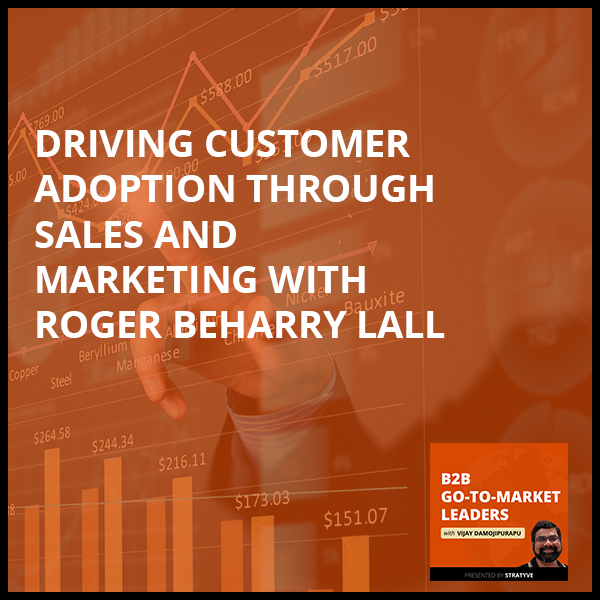
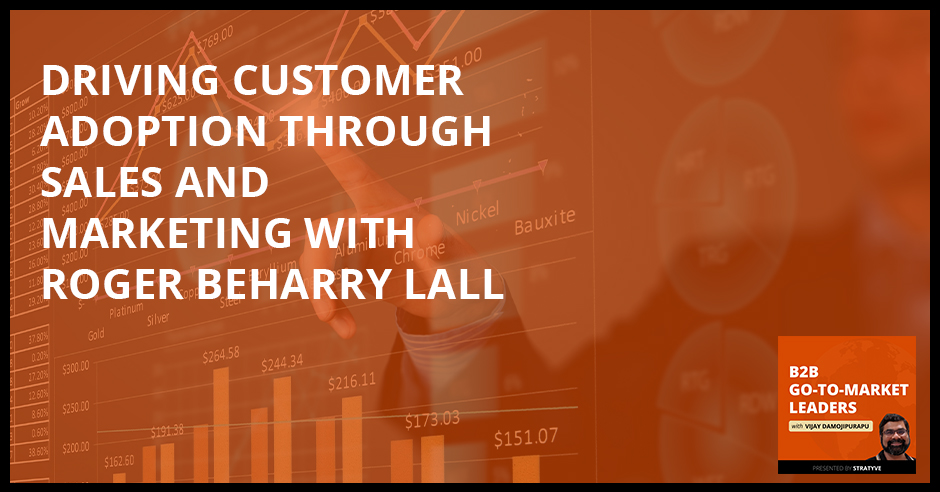





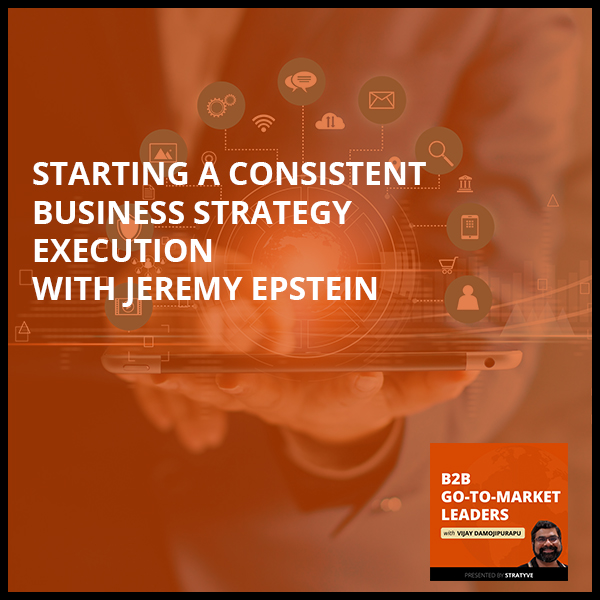
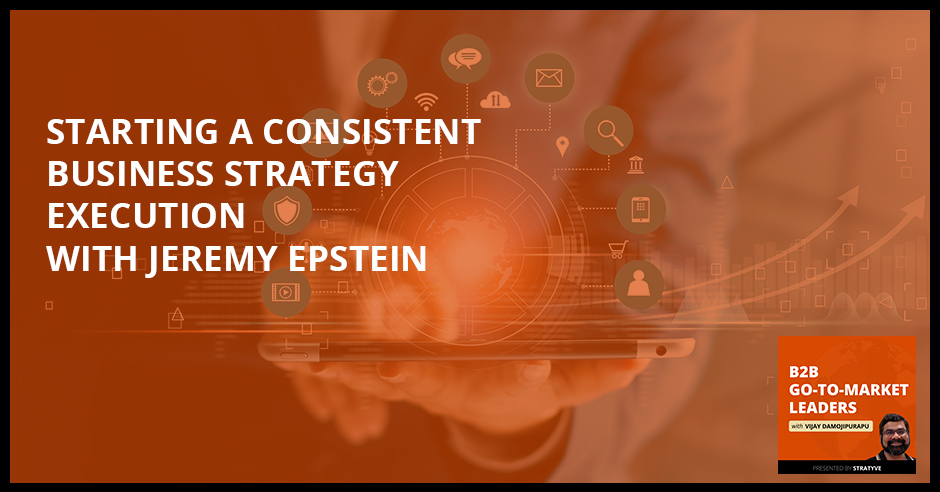


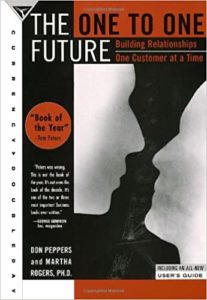



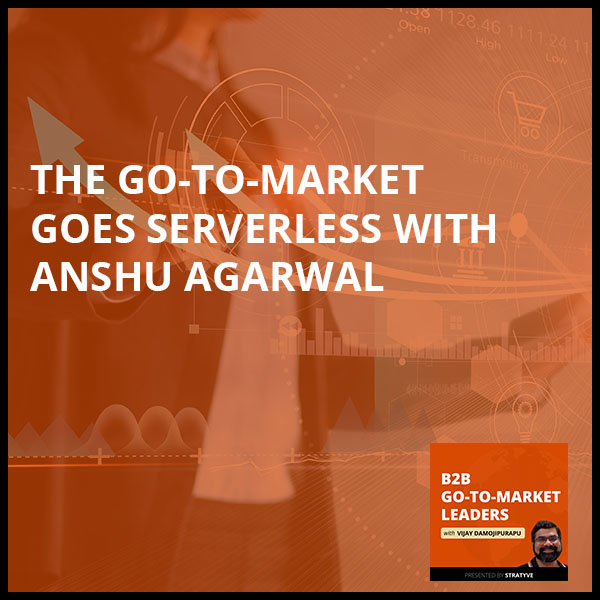




 Anshu is an experienced senior-level executive with extensive experience at startups and Fortune 500 companies in Marketing and Product Management. She has strong expertise in positioning, marketing communications, new product launches, business planning and go-to-market strategy and execution. Anshu has a reputation for successfully building and leading high-performance startup teams. She has experience with both hardware and software products including SaaS.
Anshu is an experienced senior-level executive with extensive experience at startups and Fortune 500 companies in Marketing and Product Management. She has strong expertise in positioning, marketing communications, new product launches, business planning and go-to-market strategy and execution. Anshu has a reputation for successfully building and leading high-performance startup teams. She has experience with both hardware and software products including SaaS.